At voraus robotik, everything revolves exclusively around software. Unlike traditional providers, the company does not sell hardware, but rather supplies software modules that can be used to control entire systems – without the usual programming languages from the OT (operational technology) environment.
Instead, control is implemented in high-level languages, in this case Python. This means that whether it's robots, conveyor belts, cameras, ordering systems, or peripherals, everything is controlled via a uniform Python application. In this way, many individual steps that would otherwise be programmed in different proprietary languages can be combined in a single software package.
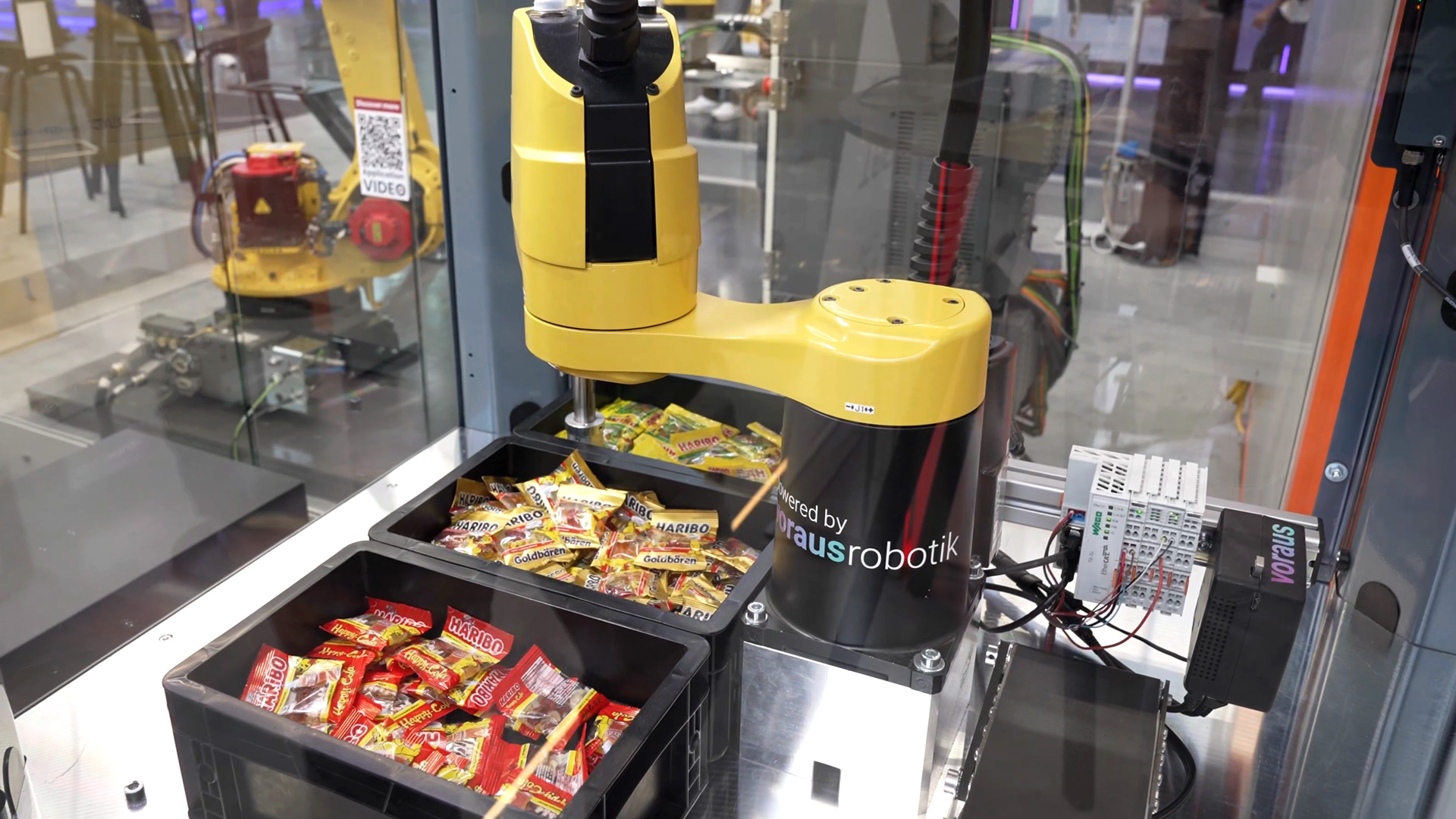
A key advantage of this approach is that it allows modern technologies and architectures from the IT world to be used directly for industrial applications. This enables the creation of scalable systems that can efficiently map even complex tasks with a high degree of variability.
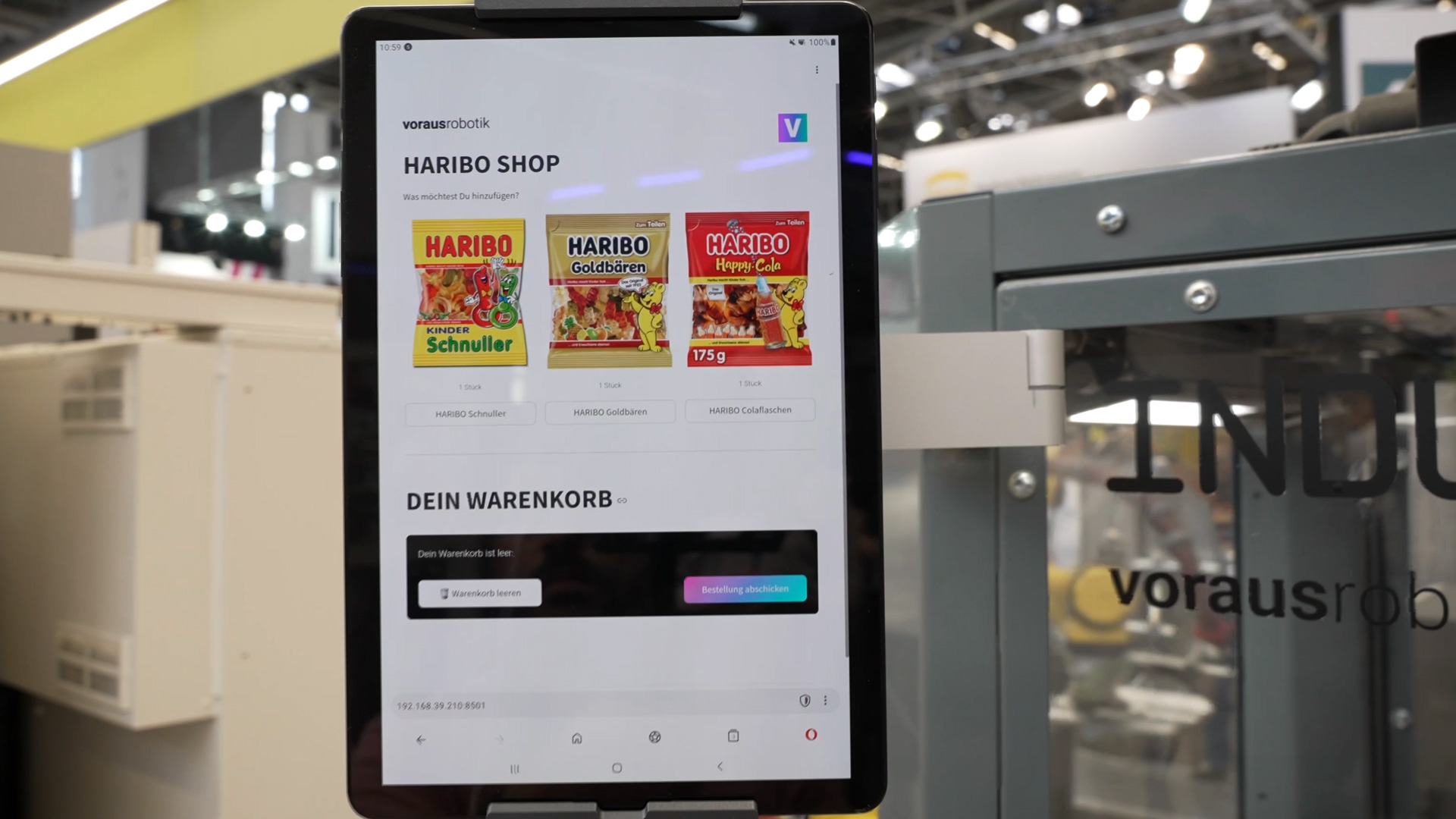
Classic areas of application can be found in the “high mix low volume” sector, i.e., where a wide range of variants must be processed automatically in small quantities – often an almost unmanageable task for conventional automation.
voraus robotik offers not only control software, but also comprehensive simulation options. The platform developed allows the same software basis to be tested both against a digital simulation and against the real machine.
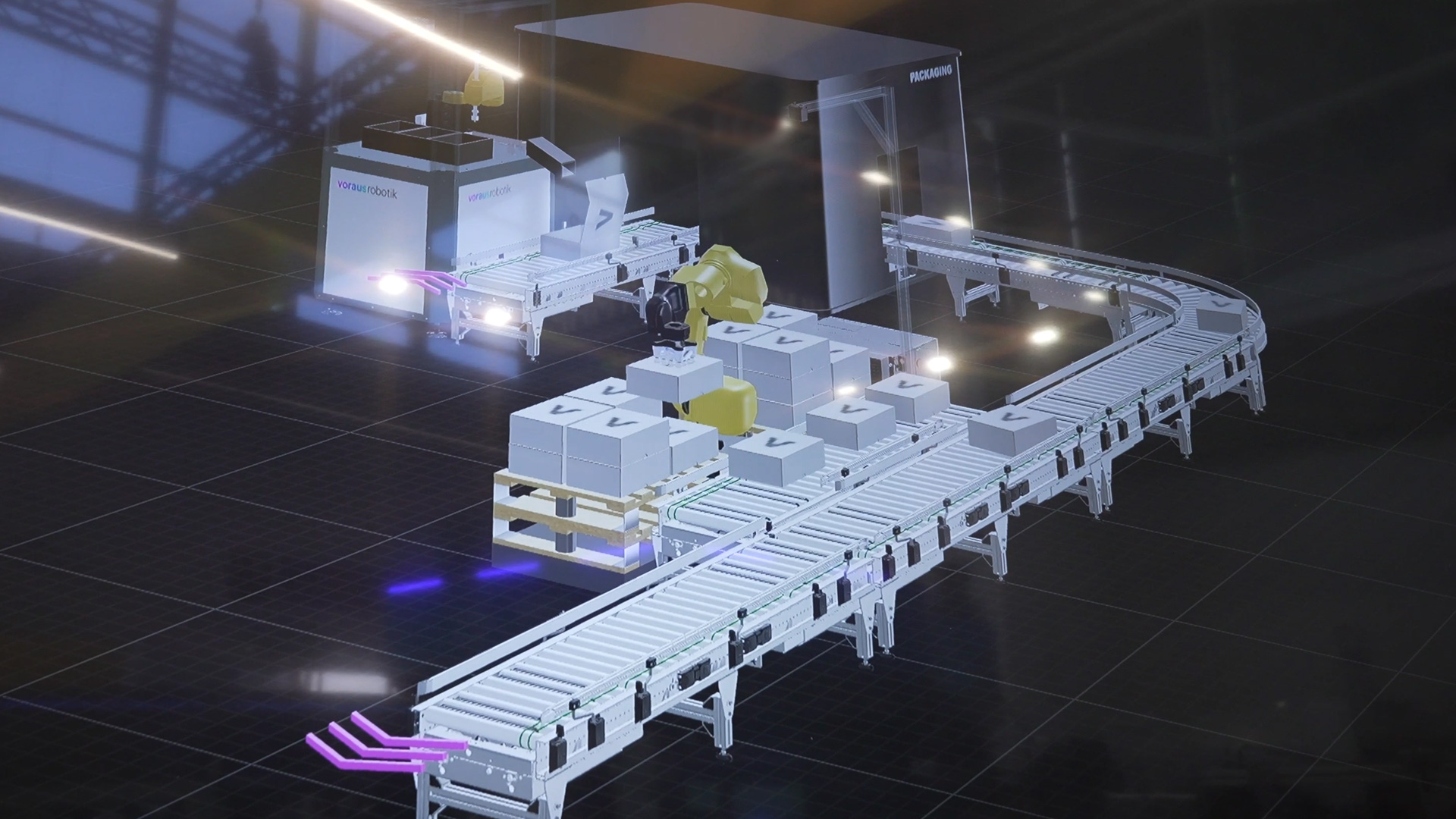
This means that numerous automatic tests can be carried out in advance, for example to check new products or packaging sizes. Errors or extreme conditions can be simulated without having to shut down a production line.
This drastically reduces the so-called “costs of change” – i.e., the costs incurred when changes are made to processes or products. This further advances the trend toward virtual commissioning, in which systems are first mapped and tested completely digitally. In addition, the simulation can be orchestrated: A wide variety of scenarios, edge cases, and stress tests can be run automatically to validate processes before they are actually implemented.
Another key feature of the platform is its high level of openness to data. In the solution presented, time series data is collected using an InfluxDB and then visualized via a Grafana dashboard.
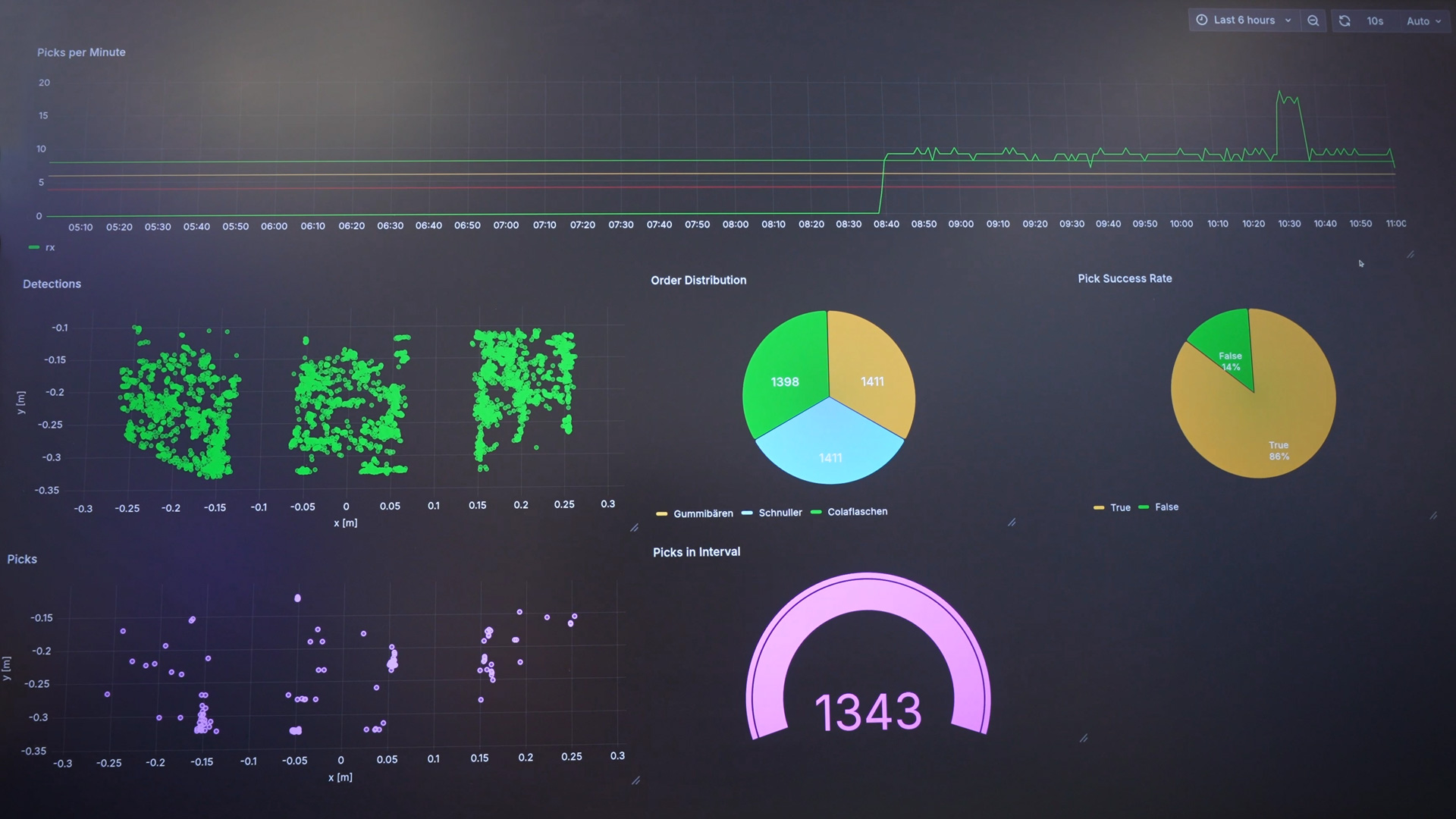
This allows users to define and monitor their own metrics, such as the number of picks per minute made by a robot or the pick success rate, i.e., how many of the parts picked up were actually processed successfully. Such insights not only provide a better understanding of the process, but also enable continuous optimization.
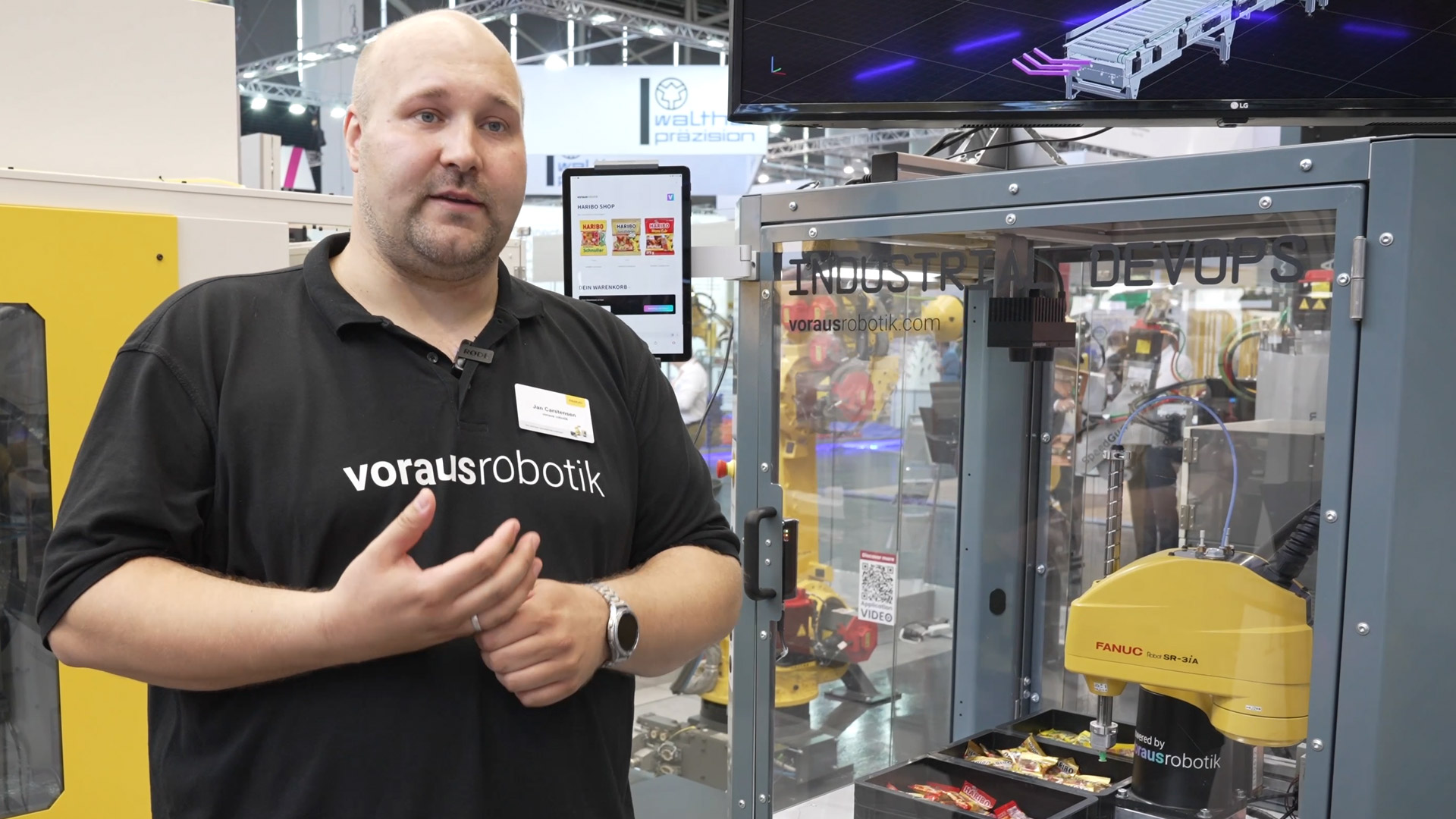
In doing so, voraus robotik does not impose rigid specifications on its customers. Instead, the company provides all relevant data and shows how individual dashboards can be designed using open source solutions. Users thus retain full control over the information and can flexibly decide which key figures are important for their applications.
Overall, voraus robotik aims to enable machine builders and integrators to implement complex and varied applications more easily. The software allows different technologies – from robots and grippers to ERP systems and AI solutions – to be combined in a homogeneous architecture.
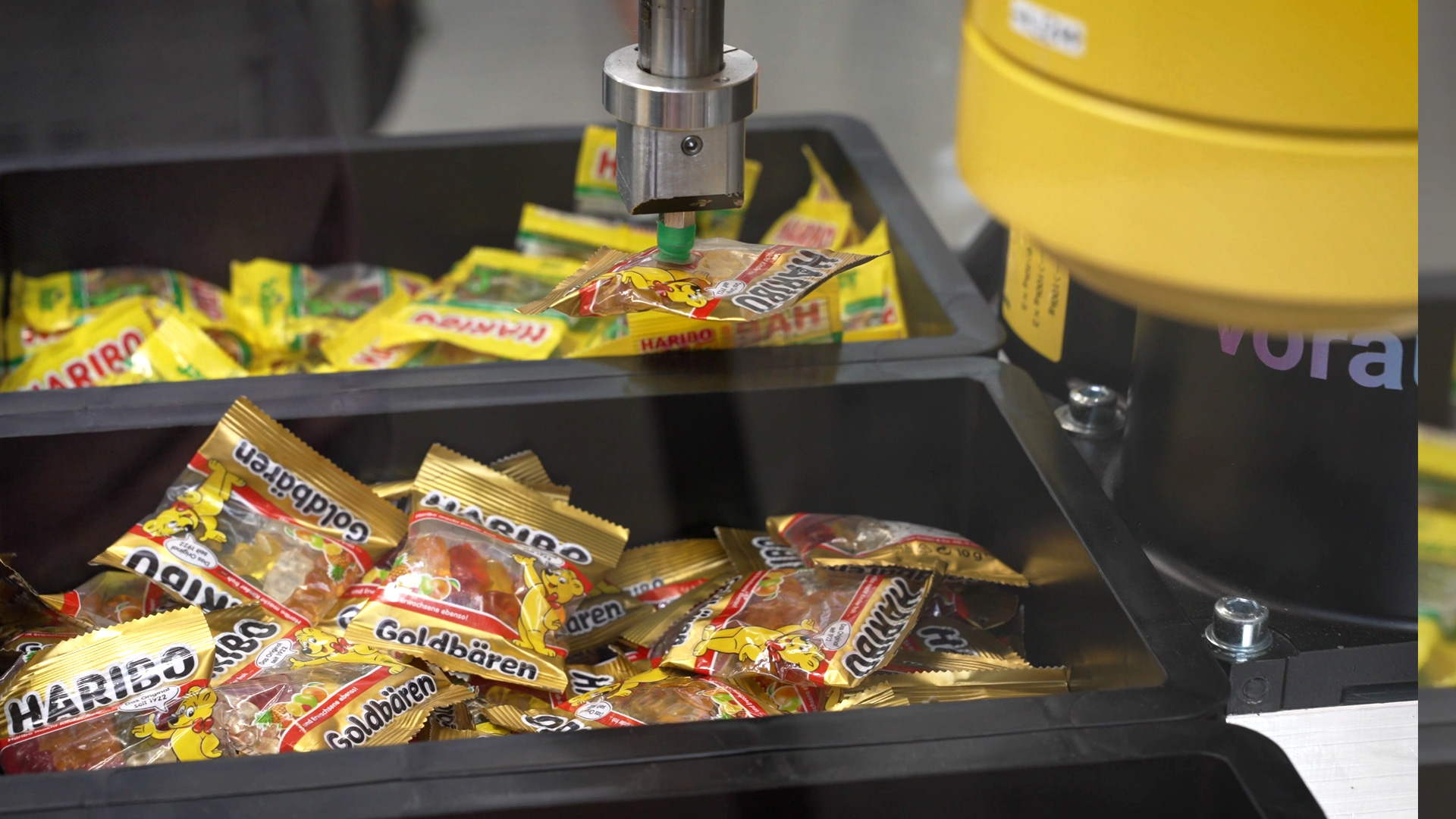
At the same time, automated tests and end-to-end simulation minimize risks and allow adjustments to be implemented more quickly. This opens up considerable efficiency potential, especially in production environments where new items are introduced every day, which would be almost impossible to achieve with traditional approaches.